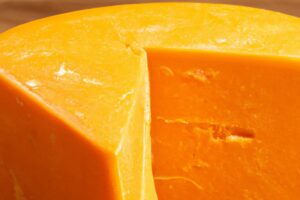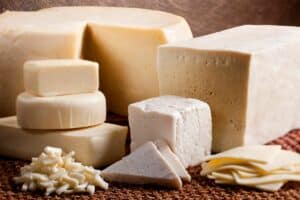Parmesan cheese is a staple of Italian cooking. But if you’re struggling to get your hands on this delicious cheese, or if you simply want to try something different, there are a few parmesan cheese alternative that can work just as well.
For your convenience, we’ve narrowed it down to five parmesan cheese substitute: Asiago, Romano, Pecorino Romano, Grana Padano, and nutritional yeast.
Part of what makes parmesan cheese delicious is its hard, crumbly texture and sharp flavor. So if you need to replace parmesan cheese in a recipe, finding something with a similar flavor and texture is essential. Fortunately, all of the substitutes on this list come pretty close in texture and taste.
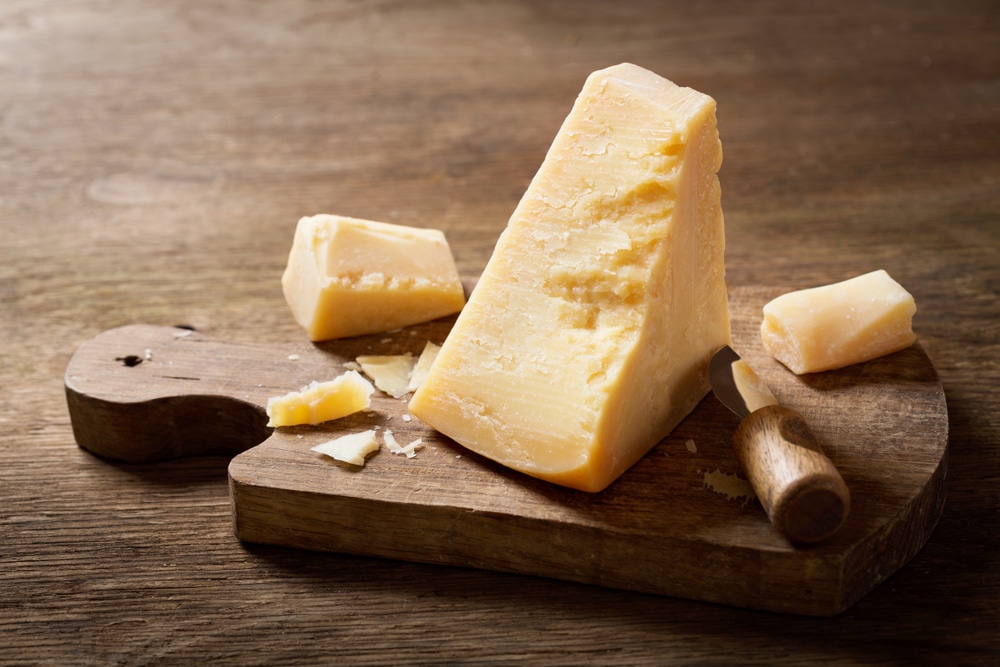
5 Recommended Parmesan Cheese Substitute
Our 5 alternative substitution for parmesan cheese:
- Asiago cheese
- Romano cheese
- Nutritional yeast
- Pecorino romano
- Grana padano
Asiago Cheese: Best Substitute for Parmesan Cheese
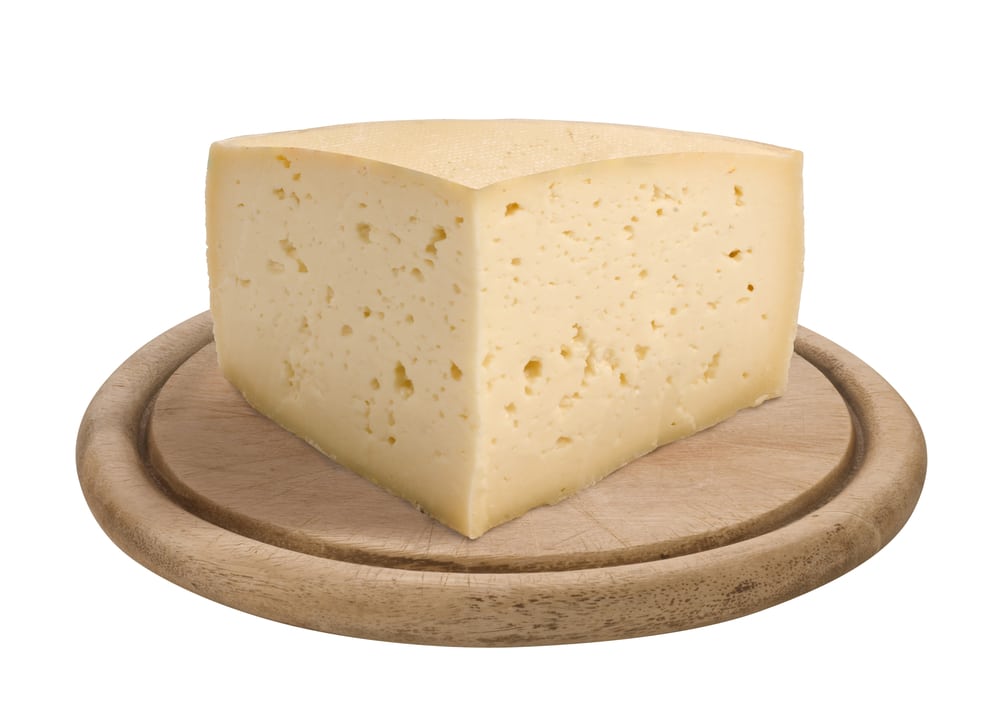
Aged asiago has a mild, nutty flavor that’s very similar to parmesan cheese. You can find it in varying levels of sharpness and hardness, but that will vary depending on its age.
The aging process is what gives asiago cheese its flaky texture and sharp flavor, so if you want something with a closer taste to parmesan, you will want to find asiago that’s been aged for around nine months.
Because it has a milder flavor than parmesan, you might have to use more asiago cheese in your recipes when using it as a parmesan substitute. Fortunately, it tends to be fairly cheap.
Asiago is best to use as a topping; if you like to grate parmesan cheese on top of pizzas or salads, this is an excellent substitute. However, it can also work well in pesto or pasta sauces.
Can’t find asiago but want something with similar taste & flavor? See most common asiago cheese substitutes.
Romano Cheese:
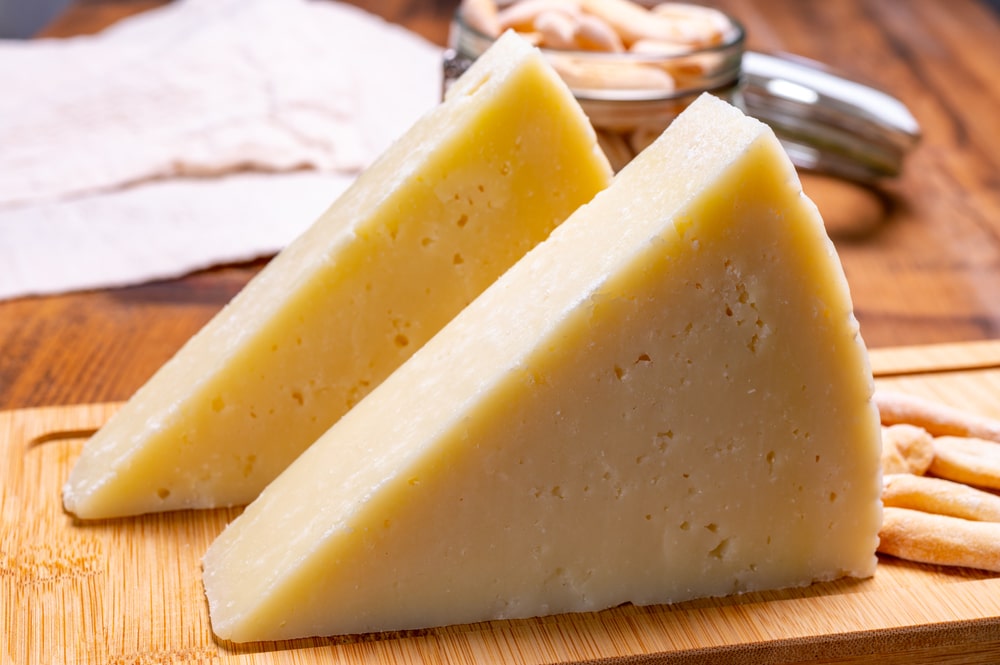
While most people use romano cheese alongside parmesan, it can also make a perfect substitute. Be careful not to confuse it with pecorino romano–that’s a different, more expensive Italian cheese.
Romano cheese is also a bit harder than asiago, so those who enjoy the texture of parmesan cheese may prefer to use romano as a substitute.
Grated romano can make a perfect substitute for parmesan cheese in your cooking. Because its flavor is strong and salty, you can use the same amount of romano as you normally would with parmesan.
Nutritional Yeast:

This plant-based substitute can add a savory, cheesy taste to your dairy-free dishes. Whether you’re avoiding dairy or simply looking for a convenient parmesan alternative, nutritional yeast might be the way to go.
Nutritional yeast is a common addition to soups, so if your soup recipe calls for parmesan, you can use this ingredient in its place. Not only does it add some cheesy umami flavor, but it can also make your soup thicker and creamier. It even comes with some health benefits!
While it’s not quite as common, some people may also use nutritional yeast in the same way as shredded parmesan cheese. For instance, it can taste great on top of your pasta or pizza or enhance a vegan alfredo sauce. Because it has a rather intense flavor, you usually only need to use half as much nutritional yeast as you would parmesan.
Pecorino Romano:
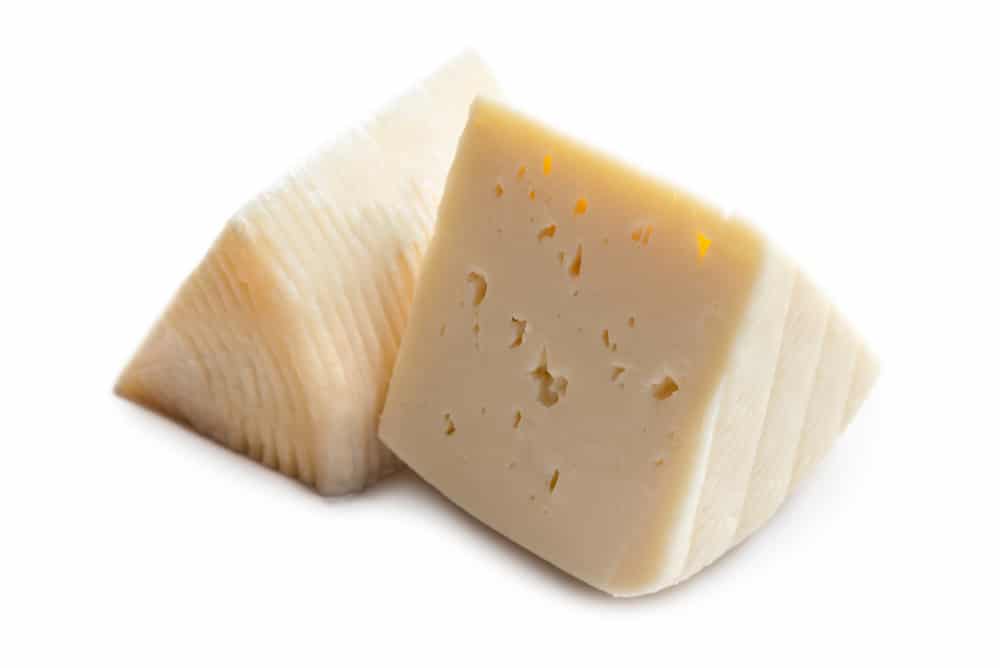
This delicious cheese is a common substitute for parmesan in authentic Italian cuisine. Unlike parmesan, however, this cheese’s main ingredient is sheep milk rather than cow milk. This adds a slightly higher fat content than parmesan or other cow milk-based cheeses.
It is often aged for up to a whole year, but most pecorino romano cheeses tend to skew younger. Nevertheless, Pecorino Romano has a very salty, savory, and aged flavor similar to that of parmesan.
This cheese has a hard and flaky texture, making it perfect for grating on top of dishes or adding to pesto. And because of its high-fat content, it’s also very easy to melt, which is ideal for alfredo sauce. Because of its similar texture and flavor, you can use pecorino romano as a 1:1 replacement for parmesan.
Grana Padano:
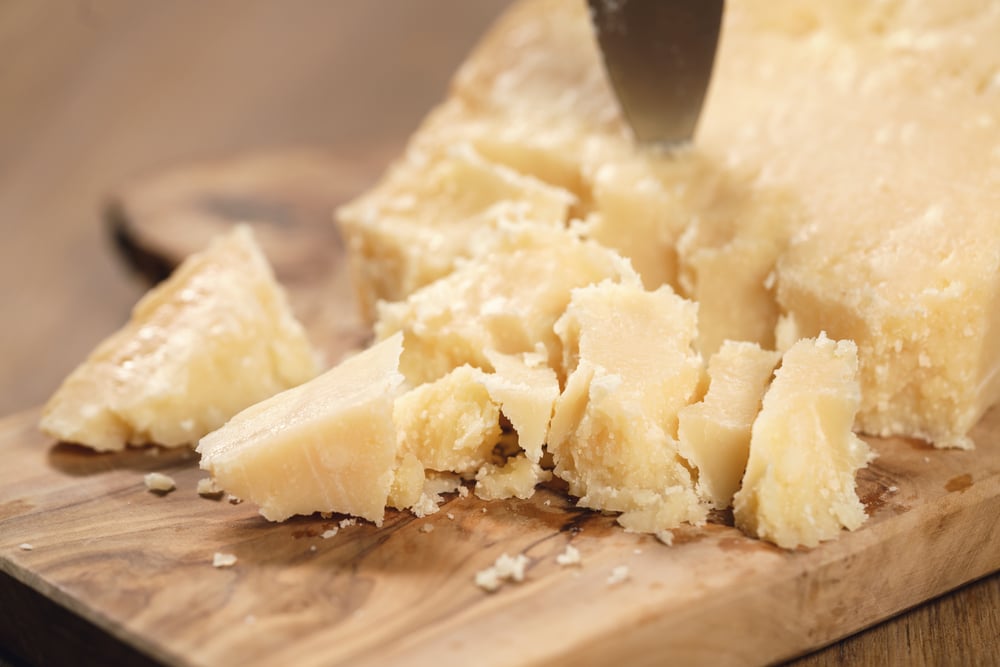
Like Pecorino Romano, this cheese is a common parmesan cheese substitute in Italian cooking. It is also sheep milk-based, so you can expect a high-fat content and dense nutritional value.
Grana Padano is aged for a minimum of nine months, giving it a similar texture and flavor to parmesan cheese. It has a creamy, nutty flavor that goes excellent in pesto. Like parmesan, it is also very hard and flaky.
When using Grana Padano as a substitute for parmesan cheese, you can use the same amount as you would parmesan.
Frequently Asked Questions
Wonder how to make the best of your parmesan cheese replacements? Here are the answers to a few questions you might have:
In some cases, you can use mozzarella in place of parmesan cheese. It can work for dishes where parmesan is merely a topping, such as pizza, baked pasta, or chicken parmesan.
However, these two kinds of cheese have significantly different textures. Parmesan is very hard, while mozzarella is one of the softest cheeses you can get. Also, when you melt mozzarella, it can become very stringy and clump together.
In comparison, parmesan cheese tends to dissolve when you melt it. Because of this, you should avoid using mozzarella in place of parmesan in alfredo sauce or pesto.
The flavor of mozzarella is also very different; unlike parmesan, which is aged to get its sharp and nutty taste, mozzarella is younger and therefore much more mild and creamy.
Overall, it’s safe to say that mozzarella usually isn’t a good replacement for parmesan.
Instead of using mozzarella, check our list of cheese similar to mozzarella.
To achieve alfredo sauce’s desired texture and flavor, you will usually want to opt for a heavily aged cheese. The harder and sharper the cheese is, the better.
So if you need a parmesan cheese alternative for your alfredo sauce, Grana Padano is the best option. When you use it in your alfredo sauce in place of parmesan, you probably won’t even notice the difference.
If you are looking for a dairy-free alternative, nutritional yeast is the best choice. This is a common way to add a cheesy flavor to your alfredo sauce without using any dairy products. It may not taste quite the same, but it can be pretty convincing.
Pesto doesn’t require parmesan, but it adds a hint of delicious savory flavor. So if you like cheese in your pesto but can’t use parmesan, you’ll want to use Pecorino Romano. It has a notably salty taste that will go wonderfully in your homemade pesto.
Yes, you can. But the melting point will vary depending on the quality and variety of the parmesan cheese you’re using.
Fresh, high-quality parmesan cheese melts quite easily. But most of the parmesan cheese you can buy in stores has been through a lot of heavy processing. As a result, it is often a bit more difficult to melt.
Parmesan that is finely ground (such as the cheap kind you’ll normally find in plastic canisters) is the hardest to melt because it is overly processed and contains fillers.
If you want to melt your parmesan cheese, you will either want to get it whole and shred it by hand or buy it pre-shredded–not ground.
Many of the parmesan substitutes on this list, such as asiago and romano, melt quite easily. So if you are looking for a parmesan alternative that will melt, you may want to consider using one of those.
No, parmesan cheese is usually not vegetarian.
Parmesan cheese often contains rennet, which comes from the inner stomachs of cows, sheep, and other mammals.
However, some heavily processed parmesan cheese does not use rennet. Others might use a plant-based rennet instead. In most cases, though, you can expect your parmesan cheese to not be vegetarian.
Those looking for a vegetarian alternative to parmesan may want to consider nutritional yeast. This tasty plant-based alternative can add the salty flavor of parmesan cheese to your dishes.
Parmesan and Parmigiano-Reggiano are two similar but ultimately different types of cheese. Parmesan is a derivative of Parmigiano-Reggiano, the latter of which must follow strict regulations.
For a product to be called “parmesan,” the requirements it must fulfill are pretty minimal. Many parmesan cheese products are only aged for ten months. They can also contain fillers and often go through heavy processing.
Parmigiano-Reggiano, on the other hand, only comes from select regions in Italy. It cannot have fillers or other byproducts, and it must be aged for at least one year. If it does not meet these requirements, it cannot have Parmigiano-Reggiano on the label.
Related Articles on Cheese Substitution:


